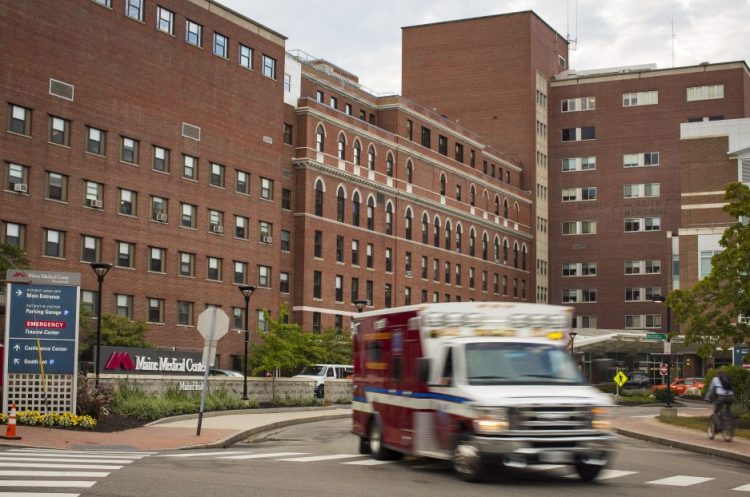Maine Medical Center asked emergency responders not to bring non-emergency patients to the hospital for 17 hours this week as it struggled to deal with what it said were near-record levels of demand for inpatient and urgent care services.
About 40 non-emergency ambulances were diverted from the hospital between 9 p.m. Wednesday and 2 p.m. Thursday. That’s about half the number that normally would arrive at the hospital during that time frame, said Clay Holtzman, Maine Med’s director of communications and public affairs.
The situation highlighted the restrictions of the Portland hospital’s limited number of beds – a chronic challenge and one of the factors leading it to seek a five-year, $512 million expansion and renovation to increase the number of single-bed rooms, hospital officials said.
The hospital has 637 licensed beds. On Thursday morning, when the hospital was diverting patients, 587 beds were filled, Holtzman said.
Maine Med has to divert ambulances a few times a year, but the volume of patients in the hospital this week was unusually high.
“The thing that was kind of extraordinary yesterday was the total number of patients we had in the hospital,” Holtzman said. “It was the highest the chief medical officer had seen in 34 years.”
There was no one explanation for the surge in patients, though Holtzman noted the number of patients in beds at Maine Med tends to be higher at the end of the week than it is at the beginning.
“When you have very little capacity left in the system, it can be eaten up by a couple factors, like flu season,” he said. “It doesn’t take much.”
Influenza has been widespread in Maine since the week of Jan. 24, according to Maine public health records, resulting in dozens of hospitalizations.
Maine Med has longstanding capacity issues and hopes its planned renovation will provide greater flexibility during periods of high demand.
Currently, more than half of the hospital’s beds are in two-bed units in buildings more than 40 years old. When a patient is too sick for a roommate or there is an infection risk, hospital staff leave the second bed unoccupied, which quickly reduces the number of available beds, Holtzman said. Many of the hospital’s beds are not universal, which means they can’t be used for all patients, and some rooms are closed because of renovation or construction, further limiting availability.
The accumulation of those factors means the hospital reaches its limit far before it fills its licensed number of beds.
“Five hundred and fifty full beds is a high census, we feel like it is at capacity at that point,” Holtzman said. As of Friday morning, there were 574 occupied beds at the hospital.
BEDS AND THOSE WHO NEED THEM
When a hospital initiates a diversion, it asks ambulance services to bring non-emergency patients to other hospitals or health centers. Legally, hospitals cannot reject a patient, but rely on emergency medical personnel to decide if a patient needs services at the hospital, or can be taken to another location, Holtzman said. During the diversion this week, Maine Med was automatically accepting trauma and pediatric patients, strokes, heart attacks and a few other cases that would require immediate assistance. Walk-in patients and transfers from other hospitals also were accepted.
John Southall, M.D., who heads the emergency department at Mercy Hospital in Portland, said his department took many of the ambulances that were diverted from Maine Med. Diversion doesn’t happen frequently, and hospitals typically go out of their way to prevent it, Southall said.
During the diversions this week, Mercy handled the overflow, but began to hit its own capacity at roughly the time Maine Med canceled its diversion request Thursday afternoon. Mercy had to go on diversion itself for about 90 minutes to recover, Southall said.
“Really, it is more random volume than anything else,” he said. “They don’t want to go on diversion; obviously, it isn’t good for anyone.”
Peter McGuire can be contacted at 791-6325 or at:
Send questions/comments to the editors.



Comments are no longer available on this story